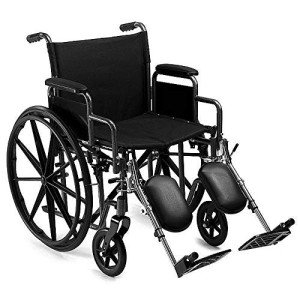Bonus Wide Bariatric Wheelchair With 24" Seat
Frame
Wheelchairs are normally manufactured in a basic width of 16" (narrow grownup), 18" (standard grownup) or 20" (wide grownup). Nevertheless, some wheelchair users require a seat width larger than these requirements. These additional large bariatric wheelchairs are normally fitted by an expert and based on the user's measurements.

In order to get the most comfortable and protected trip for travelers, it is essential that wheelchairs are effectively sized. This indicates that the wheelchair must have the ability to accommodate the user's size while having the ability to steer in tight areas. This is why BriteLift provides customized vehicles to transport wheelchair travelers. bariatric wheel chair includes vans that can securely drive and navigate large wheelchairs, allowing them to feel safe and comfortable in every trip. This is the only method to supply the most efficient transport for wheelchair passengers.
Seat
Bariatric wheelchairs are bigger than standard wheelchairs and are created to accommodate people who are heavier or larger. This additional large bariatric wheelchair from Medline includes a 24" seat and a carbon steel frame with rust- and chip-resistant chrome plating. The wheelchair has tool-free push-button adjustable footrests and easy-to-clean vinyl upholstery. It can support up to 500 pounds.
When selecting the ideal wheelchair width, it is essential to measure the user sitting typically on a flat surface across their largest part of the lap which is usually their hips. It is likewise suggested that you utilize a yardstick rather than a determining tape as it tends to give a more precise measurement. If the user will be using a winter season coat then an extra 2" must be contributed to the measurement of their seat width.
Weight Capacity
A bariatric wheelchair is typically bigger and much heavier than standard wheelchairs. This is why they require more careful maneuvering. Drivers need to be trained in dealing with these travelers. Additionally, vehicles need to have adequate space for these chairs as well as ramps and wheelchair lifts. In addition, they need to know how to schedule these trips ahead of time.
When picking the chair width, it is essential to measure the user's largest point in the seat, which is normally the hips. Numerous wheelchair manufacturers likewise use a yardstick that can be utilized to assist with this measurement. When measuring an individual's width, it is best to take the measurement directly throughout and not wrap the tape around their hips which can give a false reading.
Sometimes, the best part of an individual's thighs may be wider than their hips so this ought to be taken into consideration when choosing the chair width. In these circumstances, it is often essential to include an additional 2" to the chair width.
In general, the weight capacity of a bariatric wheelchair ought to not be gone beyond under any situations or severe injury might result. When using the chair, constantly make sure that it is on a steady and level surface with front casters pointing forward and wheel locks engaged. In addition, never ever lean or move the center of mass while being in the chair.
